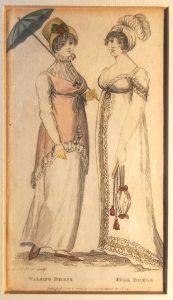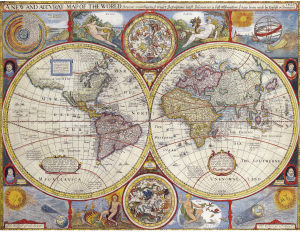Regency Dresses by R. Sands, published 1804

WALKING DRESS and FULL DRESS
Hand-coloured etching by R. Sands, published 1 June 1804 by Vernor & Hood, Poultry.
I bought it on the fleemarket for one Euro.
R. Sands was a draughtsman and etcher. For more see the National Portrait Gallery.
Walking Dresses were worn on outdoor occasions when one wanted to see and be seen. They are also known as Promenade Dresses.
Full dress is the a formal evening wear. It was worn only for very formal occasions, such as a ball or a formal reception or party.




